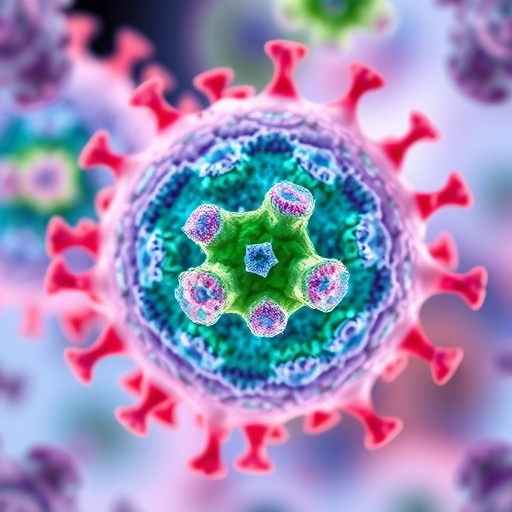In a groundbreaking advancement that promises to reshape cancer treatment, Corewell Health has secured a nearly $2.2 million grant from the National Institutes of Health to pioneer the clinical integration of dynamic Spot-Scanning Proton Arc (SPArc) therapy. This cutting-edge proton beam technology aims to revolutionize radiation oncology by significantly enhancing the precision, speed, and adaptability of proton therapy for cancer patients. Led by Dr. Xuanfeng (Leo) Ding at Corewell Health William Beaumont University Hospital, the research team aspires to develop the world’s first robust algorithm designed to optimize highly individualized treatment plans for diverse patient needs.
Traditional proton therapy techniques, such as the conventional “step-and-shoot” approach, though effective, have notable limitations including extended treatment planning periods and prolonged therapy sessions for patients. Corewell’s initial success in treating a complex salivary gland tumor using such methods demonstrated the potential of proton therapy to minimize collateral damage to healthy tissue. However, the current planning process, often taking multiple weeks, and treatment durations exceeding 30 minutes heightened the need for more efficient and patient-friendly protocols. The dynamic SPArc approach mitigates these challenges by utilizing a continuously rotating gantry that delivers radiation seamlessly, enabling faster and more precise targeting of tumors.
Dynamic SPArc therapy harnesses the advanced capabilities of continuous proton beam delivery, contrasting with existing Intensity-Modulated Proton Therapy (IMPT) where the gantry momentarily pauses at discrete angles. Such pauses slow down treatment and reduce patient throughput. By eliminating these interruptions, SPArc accelerates therapy, drastically reducing the time patients must remain immobilized, and improving comfort and compliance. The technological novelty lies in the gantry’s ability to traverse smoothly around the patient, depositing dose layers with unprecedented accuracy and minimal variation from prescribed plans, thereby safeguarding adjacent healthy organs.
Central to the clinical feasibility of SPArc is the development of a sophisticated computational algorithm capable of managing the immense complexity inherent in treatment planning. Each patient’s regimen involves optimizing thousands of proton energy layers and millions of proton spots to conform dose distribution tightly around the tumor volume. This optimization must reconcile myriad biological variables and anatomical constraints. Dr. Ding’s team is at the forefront of accelerating this computationally demanding process, leveraging state-of-the-art computing resources and novel mathematical frameworks to reduce planning timelines while enhancing plan quality.
The implications of successfully integrating dynamic SPArc into routine clinical practice are profound. Early evidence indicates that this technique can enhance outcomes particularly in treating anatomically challenging malignancies located in the head and neck, brain, lungs, and liver—regions where critical organs lie in close proximity to tumors. The ability to achieve exquisitely conformal dose distributions using rapid, dynamic delivery could minimize toxic side effects and improve patient quality of life post-treatment.
This initiative marks a significant leap forward from existing stationary proton therapy modalities toward a dynamic delivery paradigm that mirrors rotational therapies long employed in photon radiation but with the superior physical properties of protons. The project seeks not only technical innovation but also to bridge the gap between current clinical practice and next-generation treatment delivery systems, positioning SPArc therapy for widespread adoption in proton therapy centers globally.
The multidisciplinary study unites expertise from renowned institutions including the University of Pennsylvania, Mayo Clinic, Northwestern University, and the New York Proton Therapy Center, underscoring the collaborative nature necessary for pioneering translational cancer research. The collective knowledge aids in the refinement of both the technological platform and its underlying radiobiological models, crucial for validating safety and efficacy.
In practical terms, the benefits of a reduced treatment time from about 30 minutes to potentially five minutes per session cannot be overstated. It promises enhanced patient throughput, lower healthcare costs, and expanded access to advanced proton therapy technologies which remain limited across the United States due to infrastructure and time constraints. Consequently, patients who once faced lengthy waits and exhausting treatment regimens may soon experience a paradigm shift toward more tolerable, efficient care.
The future of radiation oncology may well be transformed by this dynamic SPArc technology, which marries advancements in medical physics, computational science, and clinical oncology. Such innovation holds promise not only for improved cancer control but also for decreased radiation-induced morbidities, heralding a new horizon in personalized cancer therapy.
Corewell Health’s ongoing dedication to pushing the boundaries of cancer care exemplifies the evolving landscape of precision medicine. Their focus on translating complex technological developments into tangible patient benefits paves the way toward a more equitable and effective cancer treatment model. For patients and clinicians alike, the emergence of dynamic SPArc proton therapy represents hope for faster, safer, and more precise cancer eradication.
This NIH-funded endeavor is poised to establish new standards in proton therapy delivery and computational treatment planning, potentially influencing clinical protocols worldwide. As research advances, it will be instrumental to monitor clinical outcomes, patient satisfaction, and long-term benefits to fully realize the expansive potential of this innovative cancer fighting modality.
Subject of Research: Proton Beam Cancer Therapy, Dynamic Spot-Scanning Proton Arc (SPArc) Technology, Radiation Oncology Treatment Planning.
Article Title: Revolutionizing Cancer Care: Corewell Health Advances Dynamic SPArc Proton Therapy with NIH Support
News Publication Date: October 22, 2025
Web References: Corewell Health Proton Therapy Center Image
Image Credits: Emily Rose Bennett, Corewell Health
Keywords: Clinical medicine, Medical specialties, Proton therapy, Radiation oncology, Cancer treatment innovation, Dynamic SPArc, Proton beam therapy, Medical physics, Treatment planning algorithms, Personalized medicine, Head and neck cancer, Computational oncology
Tags: advanced radiation oncology techniquesclinical integration of proton therapyCorewell Health proton therapycutting-edge oncology technologyDr. Xuanfeng Ding researchdynamic Spot-Scanning Proton Arc therapyefficient proton therapy methodsinnovative cancer therapies developmentminimizing collateral damage in cancer treatmentNIH cancer research grantpatient-friendly radiation protocolspersonalized cancer treatment algorithms





